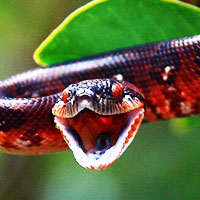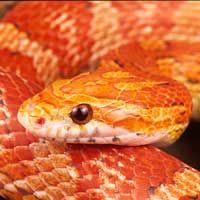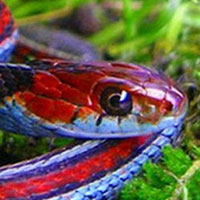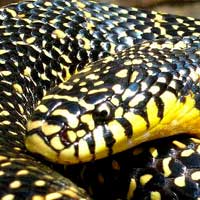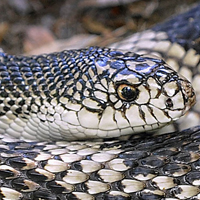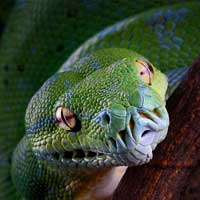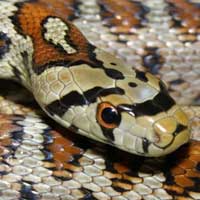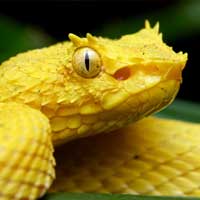Discover the Fascinating World of the Burmese Python
The scientific name of the Burmese Python is Python bivittatus, and it belongs to the Pythonidae family, which consists of non-venomous constricting snakes commonly referred to as pythons.
Scientific Name: Python bivittatus
Snake Family: Pythonidae
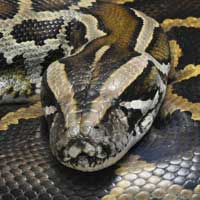
Introduction to the Burmese Python
The Burmese Python (Python bivittatus) is one of the largest snakes in the world, revered for its impressive size and unique markings. Native to Southeast Asia, this non-venomous constrictor has become a popular pet among experienced reptile keepers. Known for its docile nature and captivating beauty, the Burmese Python requires dedicated care due to its large size and specific needs. This guide explores its habitat, diet, behavior, and more, providing everything you need to know about this magnificent snake.
Understanding the Natural Habitat of the Burmese Python
The Burmese Python inhabits a variety of ecosystems in its native Southeast Asia, ranging from wetlands to forests. Its adaptability to different environments has contributed to its widespread presence.
- Geographic Range: Myanmar, Thailand, Vietnam, and parts of southern China.
- Preferred Habitat: Grasslands, marshes, swamps, and forests.
- Environmental Needs: Warm temperatures and access to water sources.
| Region | Habitat Type | Key Features |
|---|---|---|
| Myanmar | Marshlands | High humidity, dense vegetation |
| Thailand | Forests | Warm climate, abundant prey |
Diet and Feeding Habits of the Burmese Python
The Burmese Python is a carnivorous species with a diet that primarily consists of mammals and birds. In captivity, their feeding requirements must be carefully managed to ensure proper health.
- Natural Diet: Rodents, birds, and larger mammals like pigs and deer.
- Feeding Frequency:
- Juveniles: Every 5-7 days.
- Adults: Every 10-14 days.
- Captive Feeding Tips:
- Offer pre-killed or thawed prey for safety.
- Provide prey appropriately sized to the widest part of the snake’s body.
- Feed in a separate enclosure to prevent substrate ingestion.
Behavior and Temperament of the Burmese Python
Burmese Pythons are known for their calm and docile temperament, making them a favorite among reptile enthusiasts. However, their size and strength require responsible handling.
- Activity Patterns: Primarily nocturnal, with periods of activity during the evening and night.
- Defensive Behavior: Rarely aggressive but can become defensive if threatened.
- Human Interaction: Can tolerate handling well when acclimated properly.
While they are generally calm, Burmese Pythons require consistent interaction to remain accustomed to handling.
Health and Lifespan of the Burmese Python
With proper care, the Burmese Python can live 20-25 years or longer in captivity. Maintaining their health involves careful attention to their diet, enclosure, and overall care routine.
- Common Health Issues:
- Respiratory infections caused by improper humidity levels.
- Obesity due to overfeeding.
- Shedding problems (dysecdysis) from insufficient humidity.
- Preventive Measures:
- Maintain humidity levels between 60-80%.
- Provide a temperature gradient with a basking spot of 88°F-92°F.
- Ensure a clean and spacious enclosure with regular health check-ups.
Reproduction and Breeding of the Burmese Python
Burmese Pythons are oviparous, laying clutches of eggs during the breeding season. Breeding them in captivity requires specific environmental conditions and careful management.
- Mating Season: Winter months.
- Clutch Size: 20-80 eggs per clutch.
- Incubation Period: 60-70 days at 86°F-90°F.
- Breeding Tips:
- Simulate seasonal changes to trigger breeding behavior.
- Provide a suitable nesting box with appropriate substrate.
- Monitor incubation conditions closely for successful hatching.
Handling and Caring for a Burmese Python
Handling and caring for a Burmese Python requires dedication and knowledge due to its large size and strength. Proper care ensures a healthy and rewarding relationship with your snake.
- Enclosure Requirements:
- Minimum size: 8’ x 4’ x 4’ for adults.
- Include a secure lid, multiple hiding spots, and a large water dish for soaking.
- Maintain a temperature gradient for thermoregulation.
- Handling Tips:
- Always support the snake’s body fully during handling.
- Avoid handling immediately after feeding or during shedding.
- Have another person present when handling large adults for safety.
With proper care and handling, the Burmese Python can be a remarkable and rewarding pet for experienced keepers.
